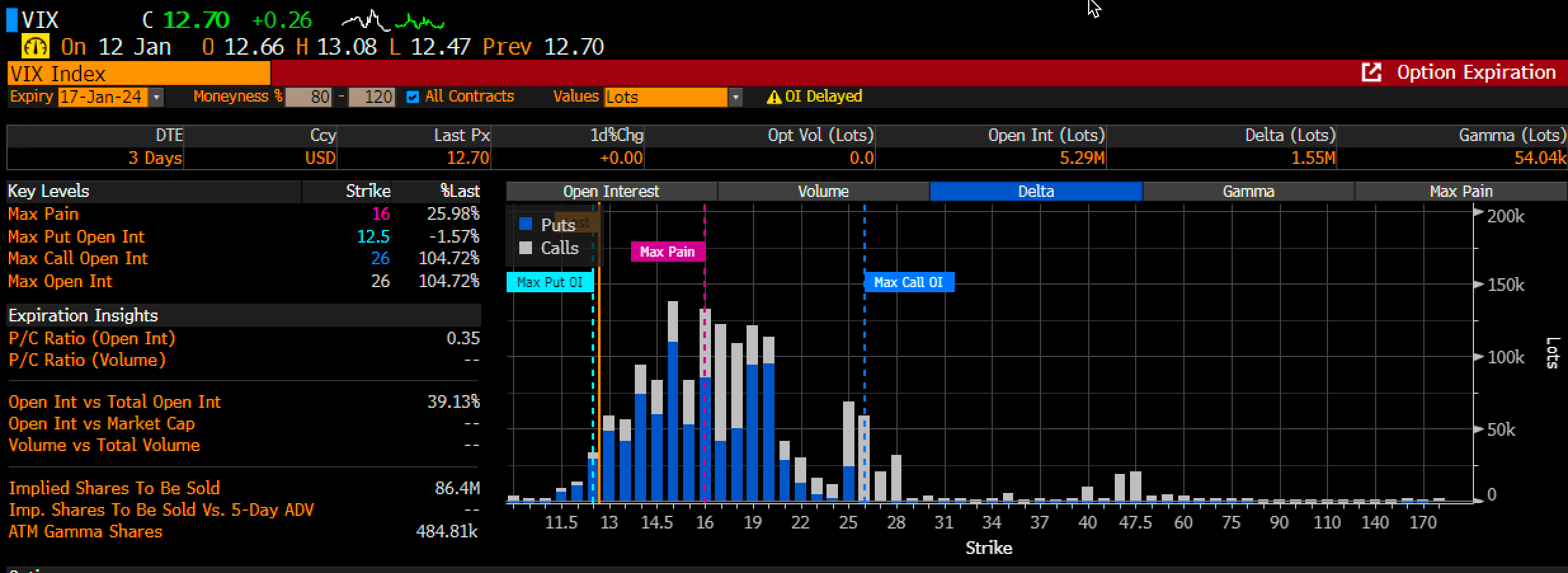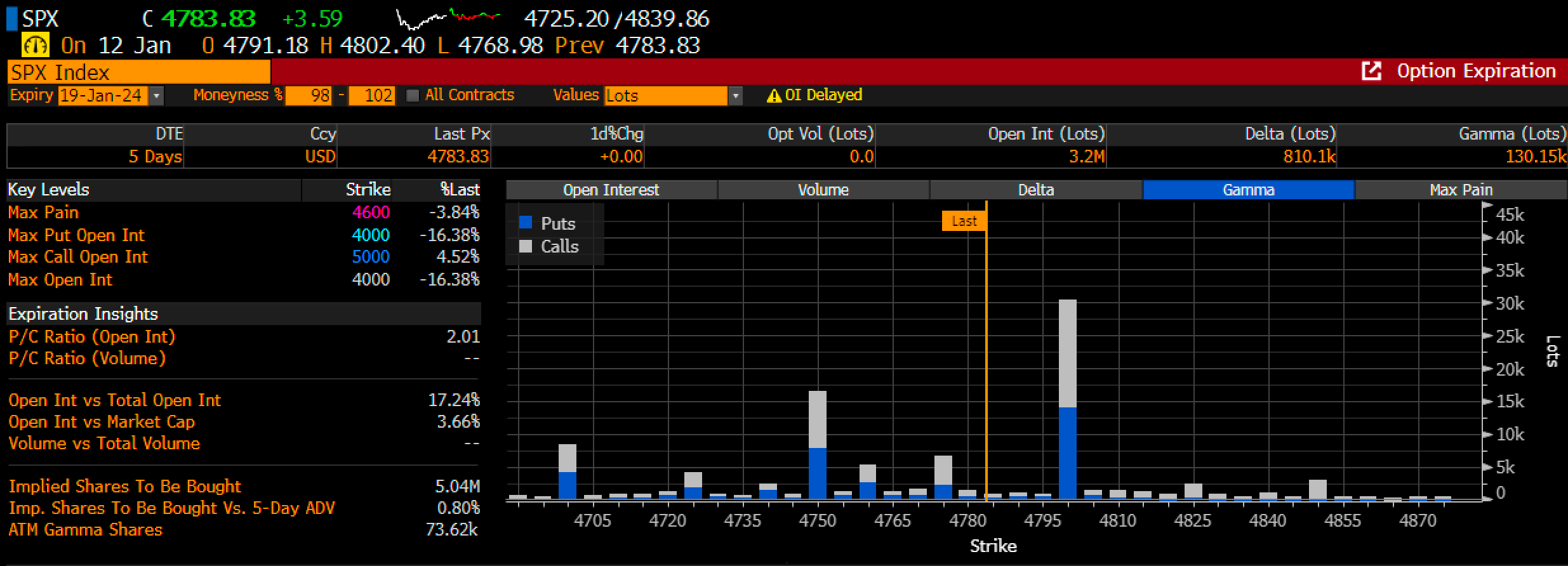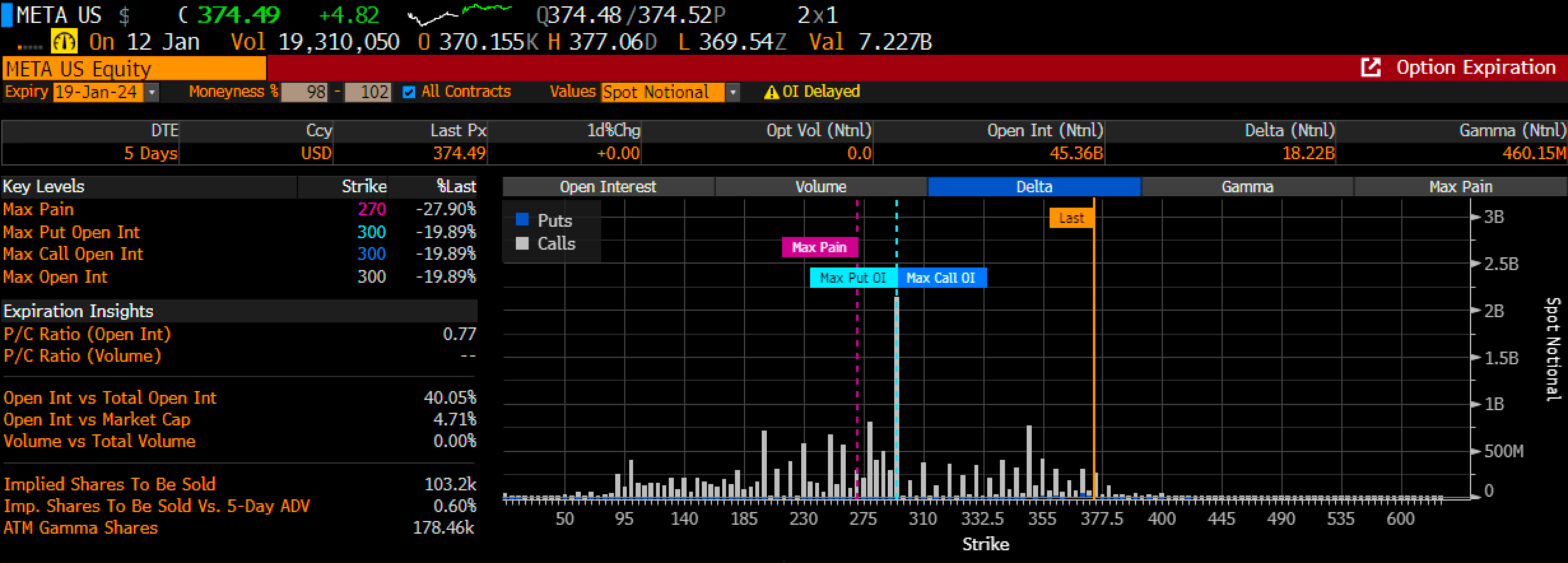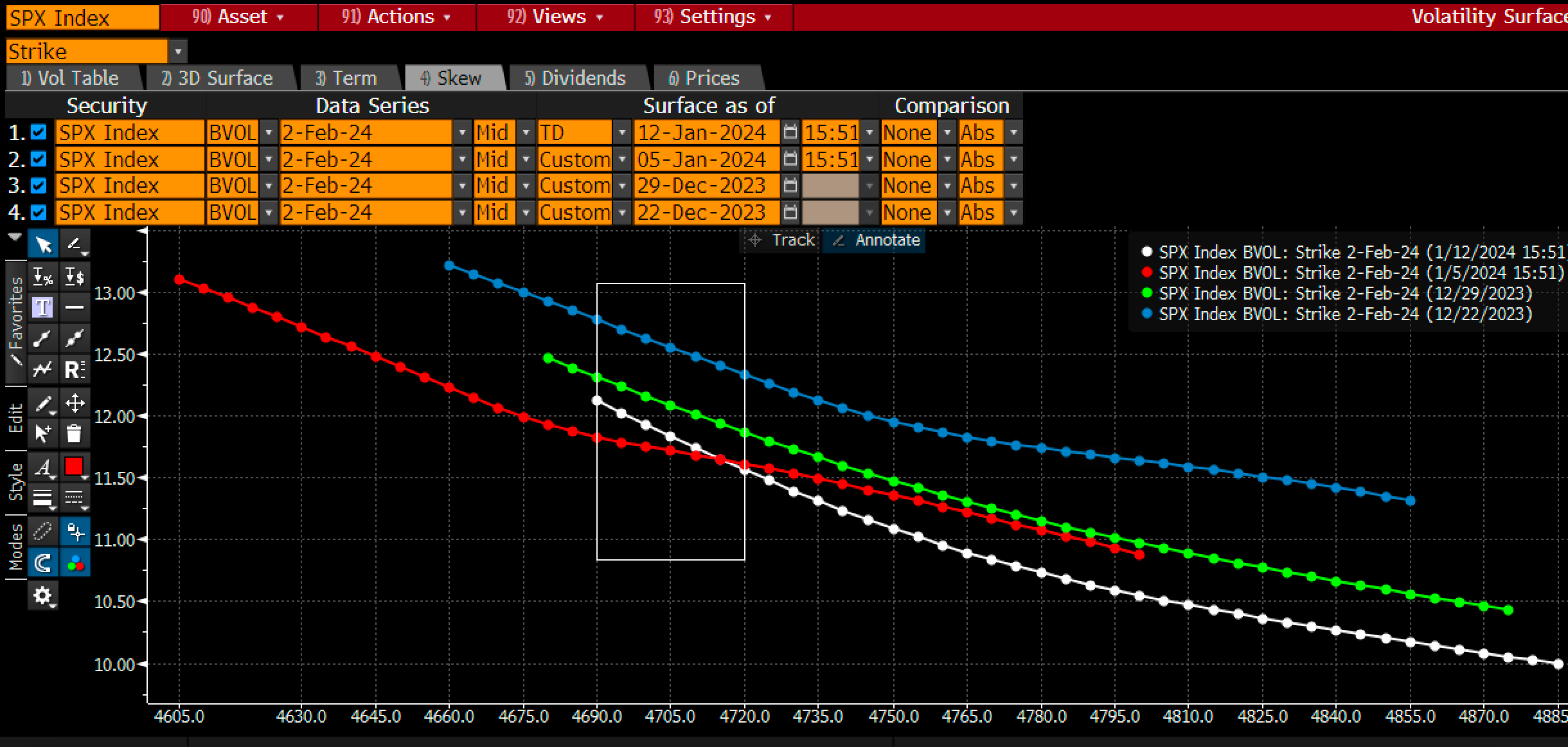US markets will be closed today, making for another short week. This will be an option expiration week with the VIX on Wednesday and Monthly stock OPEX on Friday.
This will open a window for increased volatility starting Wednesday morning, especially since we head into a Fed meeting at the end of the month and move through earnings season.
Overall, I think OPEX will play a much bigger role in where things head, at least for the rest of January. The VIX opex will help to unpin volatility from these depressed levels.
Right now, there is just a lot of put gamma on the boards that needs to be cleared out. Once that gamma is removed, implied volatility is likely to start moving up again.
For now, the flows of negative gamma are helping to suppress volatility, as market makers need to hedge implied volatility by selling volatility.

Additionally, we are seeing the call wall in the S&P 500 holding the index from moving higher, which is one reason why we haven’t seen the index clear the 4,800 level and why we have seen some sharp reversal up at that level.
Additionally, we have seen a lot of positive deltas built up in names like Nvidia (NASDAQ:NVDA), which has helped to support Nvidia and the many mega-cap names over the past several weeks.
Assuming these calls have mostly been bought by customers, and given the size of the advance in the stock and the fact that the calls are still open seems likely, market makers have generally been sellers of the calls.
That means that market makers, for the most part, need to somehow delta-hedge their open positions against these calls that have been sold by the market makers to the customers.
The problem is that the more the stock rises, the more the hedging needs to take place, and in the most basic form, the more the stock rises, the more that stock needs to be bought to cover those hedges. 
It is the same thing with Meta (NASDAQ:META), with many positive deltas built up.
The key point is that once we get past OPEX, those positions won’t need to be hedged anymore, and those supportive flows will vanish.
The constant bid we have seen in the names is also likely to vanish. What happens to the hedges is the key because if they are unwound, it could bring selling pressure to the market.
So, two things could occur over the week: the release of implied volatility and the removal of supportive flows in mega-cap stocks.
The groundwork already appears to be getting laid out, with the CBOE Vix Volatility, which measures the implied volatility of the VIX, up 10 points on Friday, in a very quiet day overall in equities.
When the VVIX starts to rise ahead of the VIX, it can serve as a leading indicator of the VIX pushing higher over time.
Additionally, this past week was the first time in 3 weeks that the implied volatility on a fixed strike basis started to rise in the S&P 500 for strike prices at lower levels for the February 1 expiration date.
Additionally, the 1-month implied correlation index was higher on Friday after hitting its lowest levels since July, and those are levels that have been on par with 2018 and ahead of the January 2018 and Fall 2018 market corrections.
Couple that with the strong moves in the bond market, mostly at the front of the curve, means that macro forces are again at work.
The US 30-Year minus the US 2-Year is now positive, and if the 2-year continues to drop, the curve will only become more positive.
The 2-year typically drops in advance of expectations for a Fed rate cut, and while it makes sense for the Fed to cut rates in 2024, given the decline in expected inflation.
The drop in the 2-year seems to be more than what would correspond with adjustments the Fed has signaled.
The 2-year has dropped by more than 100 bps since peaking on October 18 at around 5.25% and now sits at 4.15%, which implies about 110 bps of Fed rate cuts.
If the 2-year continues to drop it would I think start to imply that a recession is abound.
That is because when the yield curve begins to anticipate rate cuts and the yield curve starts to steepen, it is generally ahead of a rising unemployment rate.
It tells us that the 3.7% unemployment rate we have witnessed isn’t likely to last and will likely start to climb from here. One can easily see that once the unemployment rate starts to climb, it can rise quickly.

If the yield continues to steepen, mostly due to the 2-year falling to the 10-year, the message of recession will only grow louder, so the yield, and more importantly, the speed at which it steepens, needs to be watched closely.
My Latest YouTube Video:
